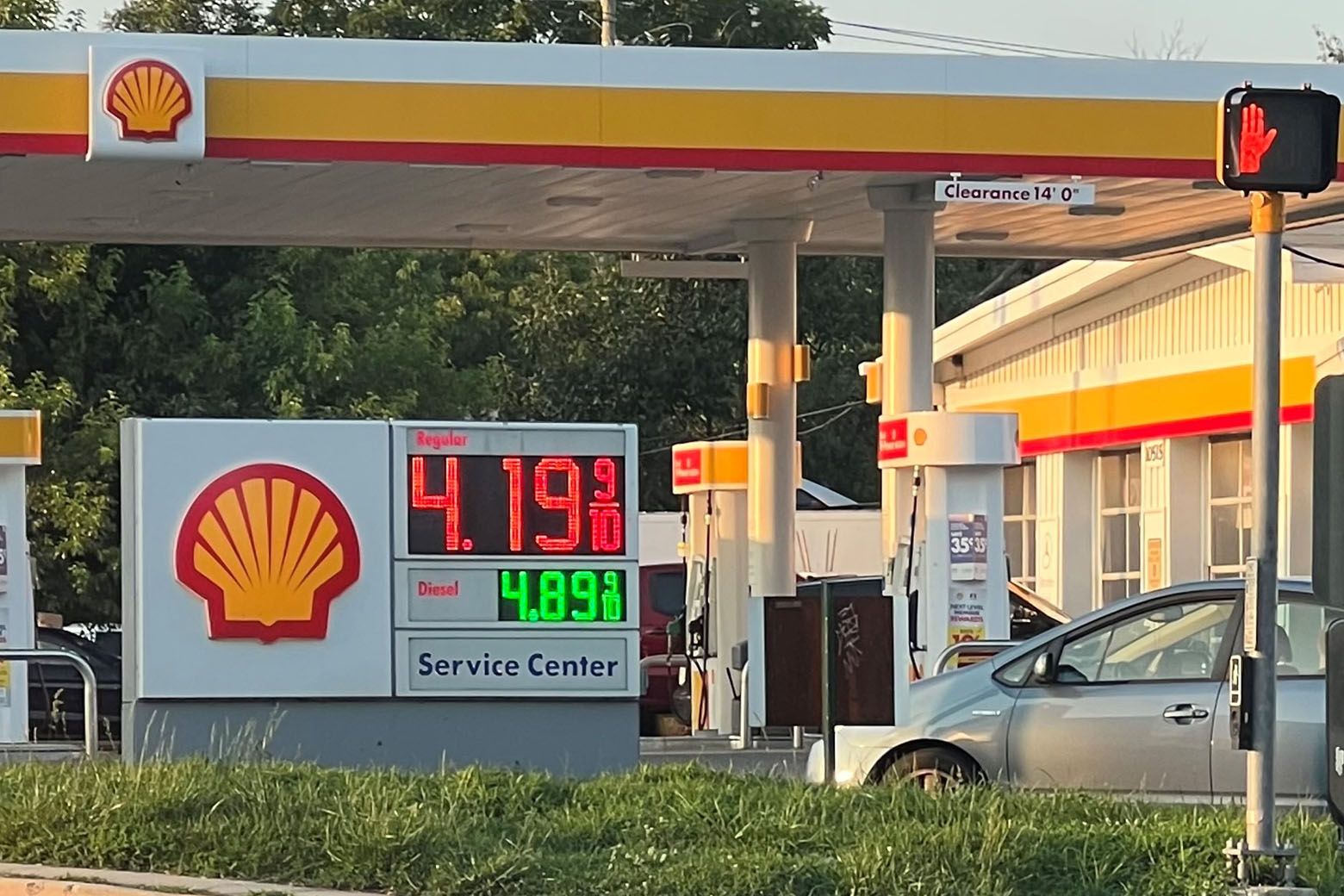Why are gas prices rising in the DC area?
Excessive heat and production caps have hurt oil supply, causing the recent spike in gas prices.
You may have noticed you’re paying more to fill up the tank in recent days.
In Montgomery County, WTOP’s Anne Kramer photographed regular unleaded listed at $4.19 at a Shell station in Kensington, Maryland, on the evening of July 31, noting it had been 10 cents cheaper just that morning.
Maryland is trending higher than the national average, which is $3.75 a gallon, by about a penny.
According to Tom Kloza, global head of energy analysis with Oil Price Information Service (OPIS), it’s an international matter of supply and demand.
“The OPEC+ cartel has cut crude oil, and we’re probably using about 2 million barrels a day — more crude oil than we’re producing here in the month of July. And that’s going to continue probably through the summer,” Kloza told WTOP. “On the other hand, demand isn’t necessarily near where it was at the peak levels in 2019 and similar years.”
Still, the price hike comes at a time of high car travel for summer trips.
According to CNN, excessive heat and production caps have hurt oil supply, causing the recent spike in gas prices. Abroad, Saudi Arabia and Russia are intentionally holding back supply in an effort to raise prices. Domestically, excessive heat has caused some refineries to undergo unscheduled maintenance, which has impacted the supply of diesel, gasoline and jet fuel.
“It’s about a lot of the refineries in the heat belt — in Texas, Louisiana, Memphis. They’re struggling and coughing and wheezing to run at maximum levels because of the heat,” Kloza said.
Those heat belt refineries have another challenge looming now that the calendar has flipped to August.
“If you don’t get a hurricane threat in the Gulf of Mexico, I think prices will ease, and they’ll ease appreciably by the time you get to November and December,” Kloza said. “The next 60 days are a little bit more problematic.”
Kloza said the typical 90-degree water temperatures in the Gulf of Mexico are conducive to storms, which is likely to affect most of the refining capacity the U.S. has for supplying oil to the East Coast.
“If you could guarantee me we don’t have one of those spirals in the Gulf of Mexico, I’d say you’re going to see cheaper prices,” Kloza said. “But unfortunately, that’s a real threat.”
Water temperatures off the coast of South Florida in Manatee Bay, on the Atlantic Ocean side, reached 101.1 degrees Fahrenheit last week; “hot tub levels” that may have set a world record for the warmest seawater ever.
Of course it’s somewhat of a Catch-22: Oil production emits methane, which is linked to exacerbating climate change, which is thought to produce more severe storms.
OPEC is scheduled to meet later this week, but Kloza doesn’t think it will have any repercussions on oil prices.
“The Saudis have cut crude oil unilaterally. And most of the people in the market think those cuts are going to last through September,” Kloza said. “And Russia is actually, believe it or not, adhering to a cut that they promised. … And that tightens up crude [oil], but there’ll be more crude oil coming on-line later in the year.”
Hurricanes or not, Kloza said he doesn’t think oil prices will be as “high altitude” in 2024.
Get breaking news and daily headlines delivered to your email inbox by signing up here.
© 2023 WTOP. All Rights Reserved. This website is not intended for users located within the European Economic Area.
Source: WTOP


